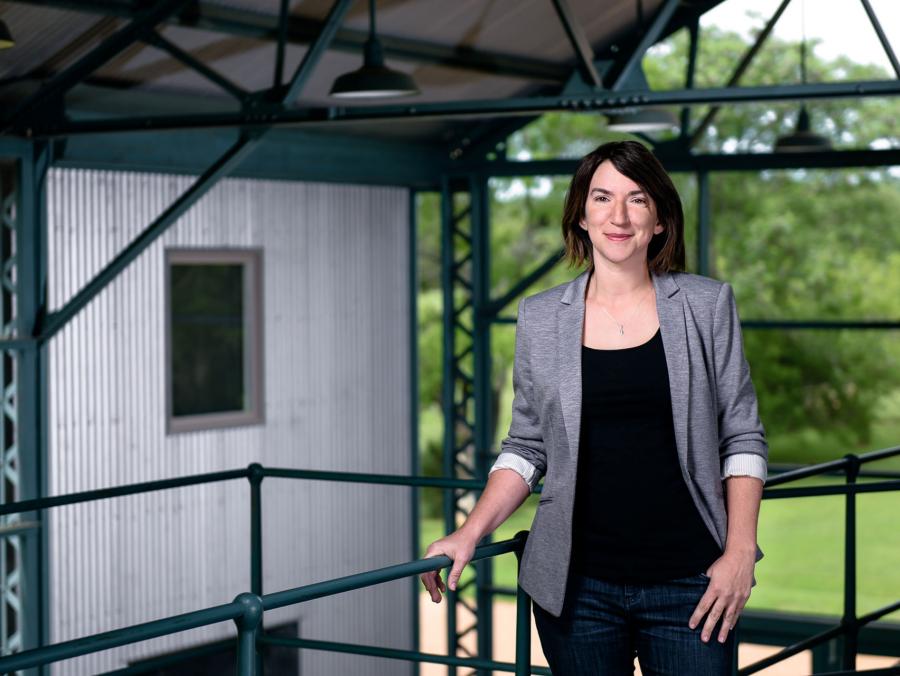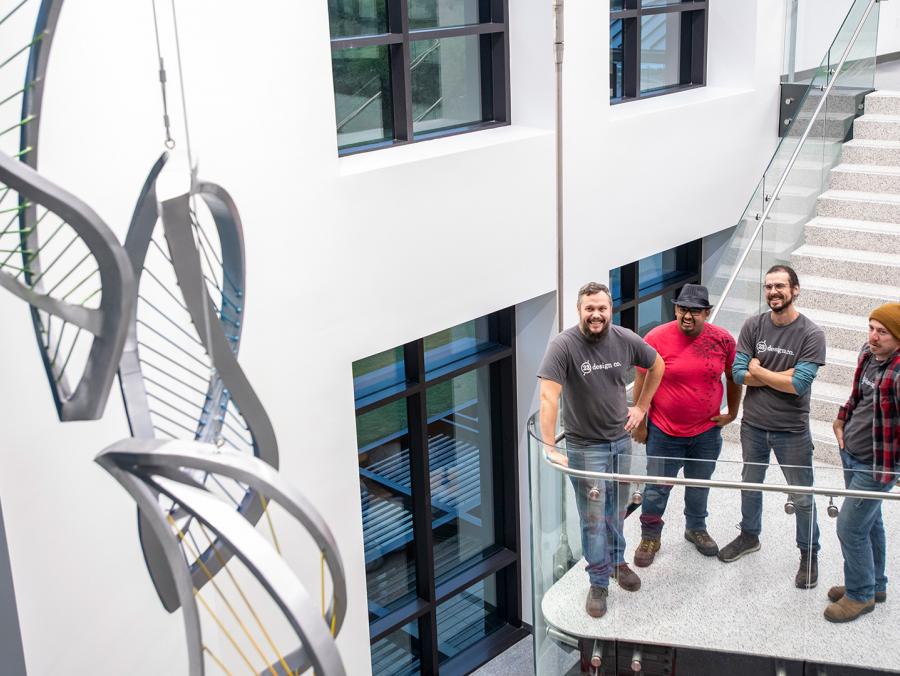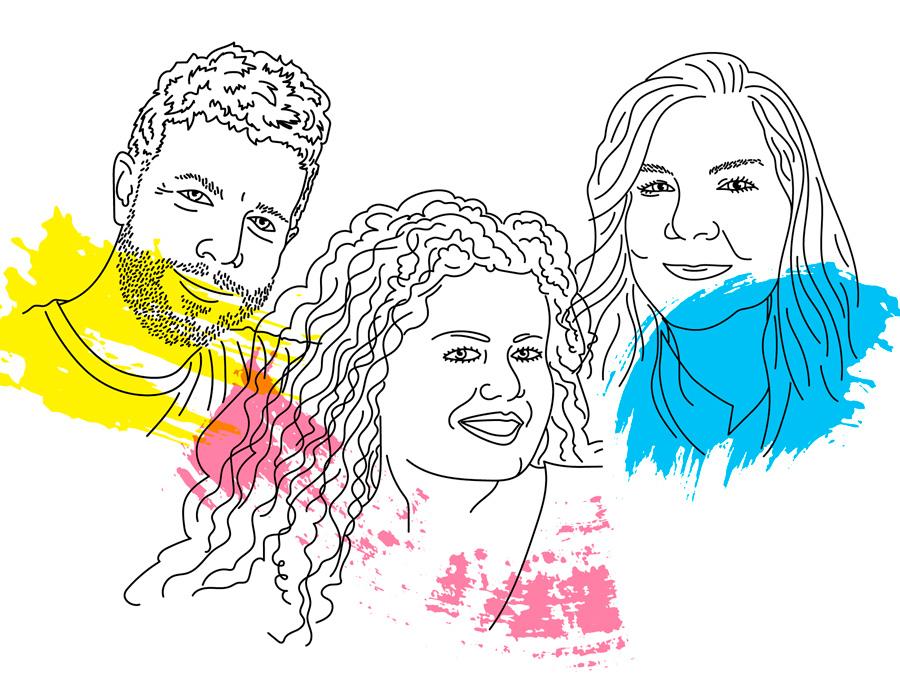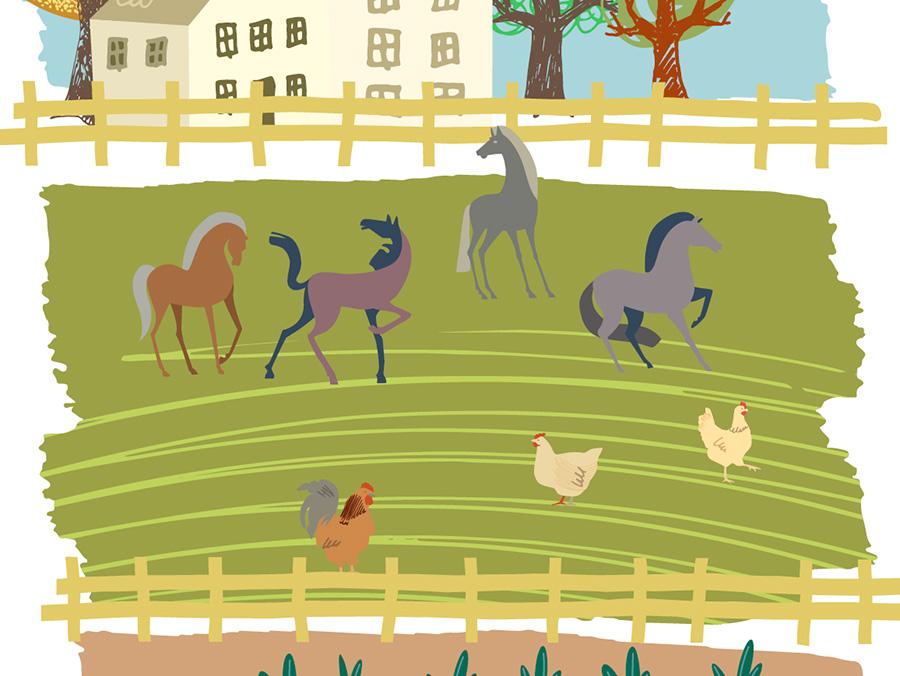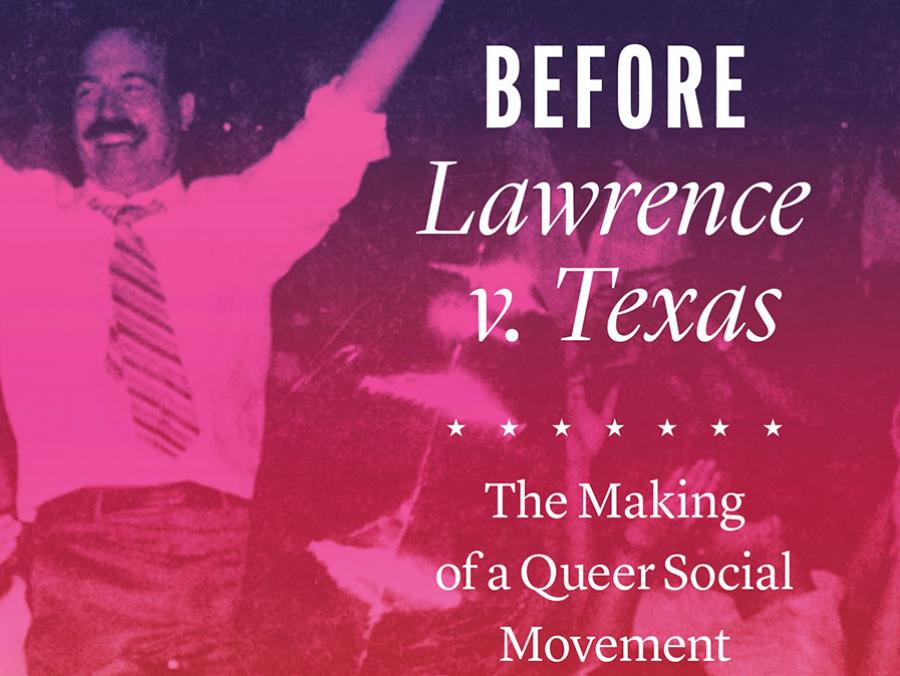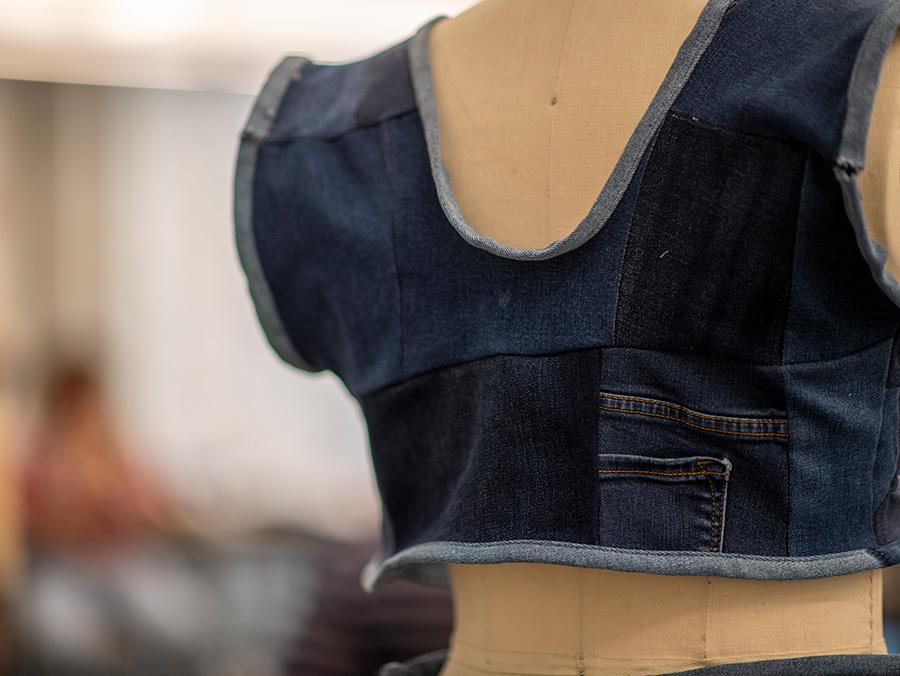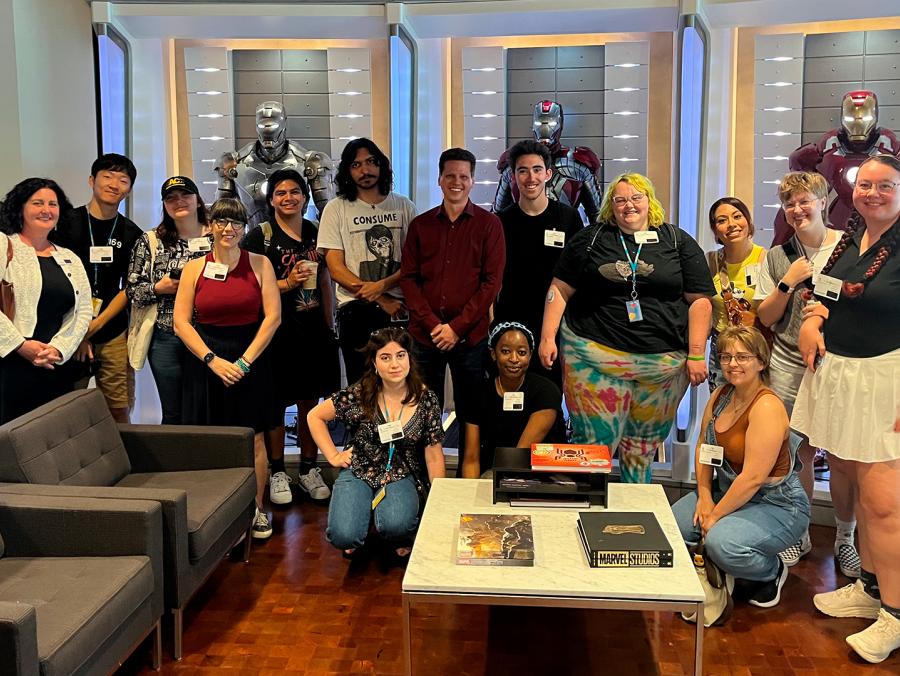va Jestratijevic was 16 and working as a model around the world when she first learned about the not so glamourous side of fashion. Getting fitted for runway shows, she often visited factories and clothing manufacturers. The abysmal conditions she witnessed are images that still fuel her work to make change today.

"There are so many bad things hidden behind the curtain," says Jestratijevic, now an assistant professor in UNT's College of Merchandising, Hospitality and Tourism with a research focus on sustainability and transformative behavior. "Huge amounts of waste, underpaid employees (commonly women and children) working day and night and overall unsafe work conditions."
With all the glitz of the runway and pressures to obtain the latest trending styles, it's easy to disassociate from the people involved in fashion's production and the impact the industry has on the workers and the environment. As one of the world's largest polluters, the fashion industry has weaved some not so pretty tales in terms of its environmental impact. While the industry is not inherently sustainable, that isn't stopping UNT community members from researching and experimenting with ways to reduce the toll that fashion takes on the Earth and the people involved in its labor.
From plant molecular biology to fashion design and merchandising, UNT faculty, students and alumni are thinking of ways to reshape the fashion industry's supply chain. In the process, they are inspiring others through their actions and educational instruction to be the next generation of changemakers with an eye on sustainability.
"As an industry, we have been bad people making really beautiful things for a very long time," says Barbara Trippeer, UNT assistant professor of fashion design. "We must acknowledge that we have a part to play in the solution and a responsibility to be mindful of the effect of our actions."
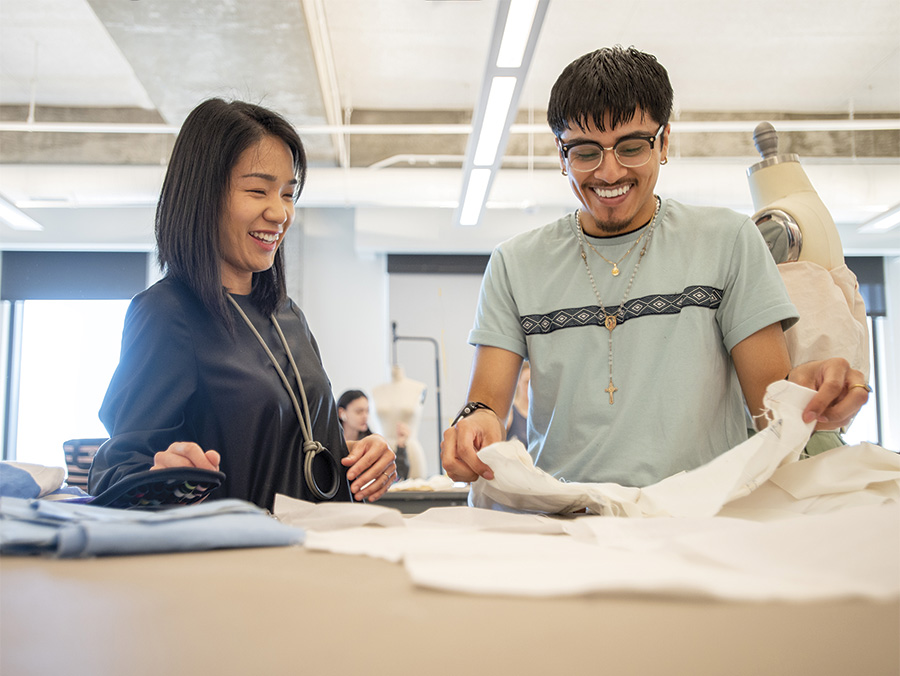
Like Jestratijevic, Chanjuan Chen ('15 M.F.A.) also saw firsthand the poor conditions of some manufacturing facilities as she toured them during her undergraduate education in China. Those experiences made her realize she wanted to do more than make beautiful clothes.
Then, as a master's student in fashion design at UNT, she was introduced to sustainability and thinking through a garment's whole life cycle. Now, she's come full circle as an associate professor of fashion design in UNT's College of Visual Arts and Design exploring ways clothing could be developed on demand via 3D printers at home in what she calls modular fashion. Her modular designs are all made up of smaller pieces that interlock together -- one even mimicking intricate, hand-woven lace.
"The idea is that in the future, you wouldn't even have to go to the store anymore. You could download, print and assemble your own garments at home," Chen says.
While 3D-printed garments might not be ready for mainstream, there are simpler sustainable techniques that could more readily be adopted by the industry. In her courses at UNT, Chen instructs students on zero waste pattern design and cutting techniques that reduce fabric scraps.
"I introduce sustainability in all of my courses as something that shouldn't be an extra thing to think about, but rather something that's a natural consideration in the way students approach their designs," Chen says.
Many of Chen's students have taken a sustainability focus with their work. For his senior collection inspired by nature, Johnathan De La Cruz is using all cotton fiber and natural dyes.
"I wanted to use biodegradable materials so that if it ends up in a landfill, it can decompose naturally and not pollute our environment," he says.
De La Cruz visited a cotton farm along with other fashion design students in 2022. The trip was one of many educational initiatives -- such as field trips, lectures and workshops -- funded through grants UNT has received in recent years from Cotton Inc., a nonprofit funded by U.S. cotton growers that is focused on research and marketing of the crop.
"It's so important to step outside of the design process and think about other parts of the fashion industry -- such as where fabric is being made, how it's being made and who it's being made by," De La Cruz says.
That perspective is exactly what UNT fashion design faculty members Barbara Trippeer and Hae Jin Gam hoped students would glean from the experience. Trippeer, Gam and other professors in the Department of Design are working together to give students a well-rounded education when it comes to sustainability.
"We're really working on an interdisciplinary approach to design education across our programs in fashion, interior and communication design," Trippeer says. "In all three disciplines, we share a vision of ethical design, looking at things with a holistic thought process and thinking about the more human-centered perspective."
Trippeer and Gam also have teamed up to analyze UNT's design curriculum that cross-trains students and look at the viability of using smaller clothing manufacturing facilities through doing a published case study of Ottomatic Threads, a Cross Roads-based micro-factory and outdoor fashion line owned by Alisa Otto ('06, '15 M.F.A.).
"Our industry is changing. With some of the big fashion corporations closing, there are more opportunities for students to start their own companies," Gam says.

As a plant molecular biologist, Roisin McGarry's work is far from the fashion runway, but in the future, it still could have a very real impact for a prime textile used to construct many of the world's garments. Her research, which has been funded by the U.S. Department of Agriculture and Cotton Inc. among others, focuses on the architecture of the cotton plant. She's part of an interdisciplinary team of researchers in UNT's BioDiscovery Institute, which was established in 2016 to develop innovative solutions to create a sustainable bio-based economy. Cotton is a textile most prominently used for clothing, but it's also a component for making currency, floor coverings, building insulation, medical supplies, various beauty products and other items.
"It permeates so many facets of our lives, yet we haven't seen much study on cotton's genetics," McGarry says.
The absence of previous research has required McGarry to invent her own genetic tools for working with the plant.
She specifically looks at ways the cotton plant's genes can be manipulated to impact the structure of the plant, making it grow more efficiently using less of Earth's precious space and water resources.
"I investigate the growth regulation of the plant, looking at things such as flowering time, arrangement of branches on a plant, as well as the size of the bolls it produces," McGarry says. "The goal with my research is to find ways to increase the yield of cotton fiber from the plant."
As fashion designers turn to using more natural fibers for their collections, the demand for textiles like cotton will grow, McGarry says.
"And as we increase the yield of cotton, we want to make sure its fibers still have a high quality," she says. "Those attributes don't happen during processing or after harvesting. They happen on the plant itself and are determined by how the plant grows. That's why my work on the biological and agricultural side of things is fundamentally important to solving sustainability challenges."
Another challenge is production waste. Each year, 11.3 million tons of textile waste in the U.S. ends up in a landfill. That amount of waste was smaller when Jana Hawley became one of the first scholars in the country to study textile waste in the 1990s as an assistant professor at UNT, but it still didn't sit well with her.
"I wanted to do research that was personally satisfying to me," Hawley says. "I studied it from all aspects -- how textiles go into the waste stream, what companies do with the waste and what we can do to reduce waste from entering the stream. Now, we're seeing more companies finally starting to look at the circularity and zero waste possibilities of textiles, which is exciting."
As a sought-out expert on textile recycling, Hawley has consulted for many companies from large retailers such as Walmart to smaller businesses like Looptworks, which works with waste from brands to upcycle materials into new products.
Currently serving as dean of UNT's College of Merchandising, Hospitality and Tourism, Hawley has made sustainability a priority in the college's curriculum and is encouraging younger faculty like Jestratijevic to continue discovery in this field.
In her courses, Jestratijevic ensures students understand fashion's impact on the world, so they are well equipped to make environmentally mindful decisions in their future careers. In 2020, she launched a unique undergraduate course covering sustainable strategies in merchandising, and she is currently developing another course on sustainable packaging, a focus of her research.
"I tell my students, you know what the ideal fashion item would be, the one I hold in my hands which doesn't exist," Jestratijevic says. "Whatever we produce will never be completely sustainable because there will always be some sort of impact. That doesn't mean we shouldn't stop trying to decrease the negative effects of the industry."
Jestratijevic has found that a combination of sustainability strategies could help fashion brands lessen waste from their packaging. The seven strategies include: rethinking packaging logistics, refusing to use single-use packaging, reusing packaging, reducing the packaging quantity, recycling packaging, repurposing packaging and providing rot or compostable packaging solutions. This past fall, Jestratijevic and her research partner Urška Vrabič-Brodnjak, who was a visiting professor at UNT in 2022, presented the first global report on sustainable packaging innovation in the fashion industry in scientific journals Sustainable Production and Consumption and Sustainability.
Jestratijevic will soon publish an open-source book through UNT Press that educates about sustainable practices businesses can incorporate in their operations using her own research and interviews with leaders from sustainably focused organizations such as Patagonia, Eileen Fisher and Fashion Revolution. Of the thousands of fashion brands in the U.S., fewer than 100 are officially certified for their sustainability practices.
"Many companies say they are sustainable, but it's just good marketing," she says. "The fashion industry is not isolated, there are so many other industries from agriculture to retail that are involved. We must work together to make sure the entire chain of operations is sustainable."










